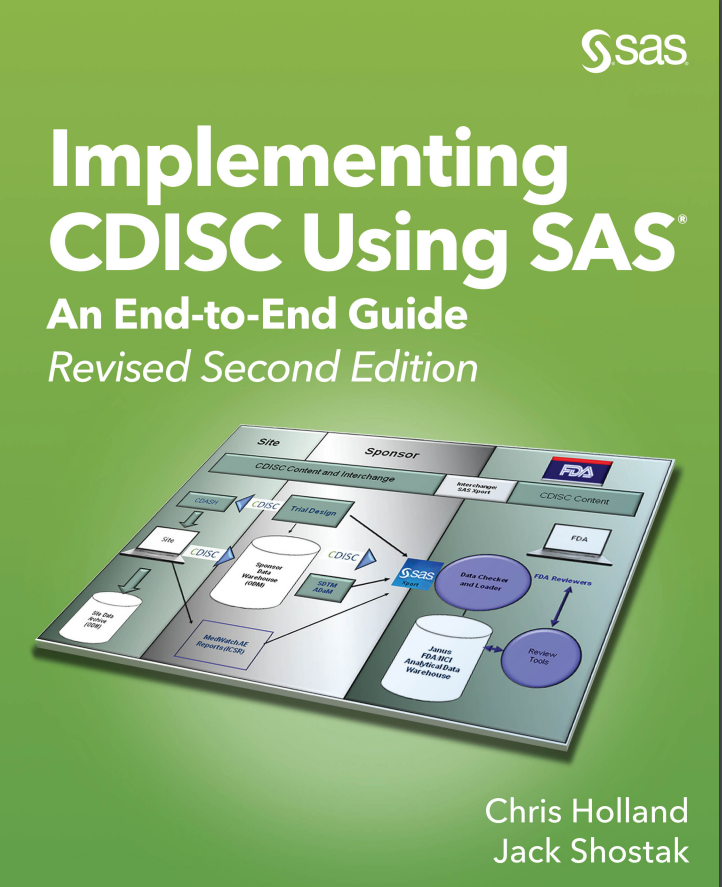When Jack Shostak and I first started thinking about writing a SAS book on implementing CDISC (Clinical Data Interchange Standards Consortium) standards, we held one truth to be self-evident: that at least some parts of the book would be outdated before it was even published. Thanks to some lucky timing and the ability to make some minor tweaks just prior to publishing, the extent of the “outdated-ness” with our first edition of Implementing CDISC Using SAS: An End-to-End Guide, was fairly limited…for a few weeks at least.
 Shortly after publishing, the final version 2.0 of the Define-XML specification came out and we knew there was some work to do in the future. So, after a bit of a writing break, we rolled up our sleeves again and began updating our %make_define macro and the associated metadata spreadsheets for the second edition of our book. Quite a few other changes were also in the works!
Shortly after publishing, the final version 2.0 of the Define-XML specification came out and we knew there was some work to do in the future. So, after a bit of a writing break, we rolled up our sleeves again and began updating our %make_define macro and the associated metadata spreadsheets for the second edition of our book. Quite a few other changes were also in the works!
That edition came out in November of 2016. However, CDISC standards didn’t stop for us. True to form, even before publishing, we realized that we weren’t implementing NCI codes, aka “C-codes”, in our metadata-controlled terminology.
This was painfully obvious thanks to a check that started coming up in the Pinnacle 21 reports: “Missing NCI Code for Term in Codelist”. Some users shared this feedback with us, and we took action (thank you, users!).
So with some motivation from Jack, I started working on implementing C-codes. But I wanted it to be slick. The codes are all on the NCI website spreadsheets, so why should we expect users to enter them all into their study-specific metadata spreadsheets, right? Why not just read those spreadsheets, also available in XML format, and automatically merge the C-codes into the study-specific data? Well, I can tell you why it wasn’t that easy.
Jack, meanwhile, was a little more motivated than I to get a solution in place. So, as he frequently did back when we worked together at PRA Health Sciences in the early ’90s, he showed me how it was done. Thanks to him, in April of this year, Implementing CDISC Using SAS: An End-to-End Guide, Revised Second Edition hit the virtual bookstore shelves. The updated macros and meta-data spreadsheets can be downloaded on the SAS website. See the C-codes for yourself and let us know what you think!
Want to get a sneak peek? Also check our book excerpt of Chapter 1: Implementation Strategies! Hoping to learn more about SAS Books? Subscribe to our newsletter for the latest discounts and news.
Other Resources:
Move beyond the ‘whys’ of CDISC and bridge the gap between theory and practice by Jack Shostak

1 Comment
Dear Chris, thanks for your very helpful book. May I have a question to ask you? When I tried to use you maco make_define2 to make define.xml, the external link to multiple aCRF page numbers can not work while link to only one page number is ok. Cloud you please help solve this bug?
Thanks
Sam